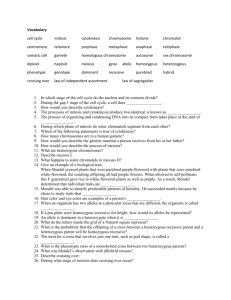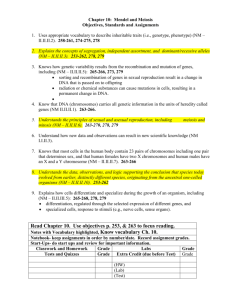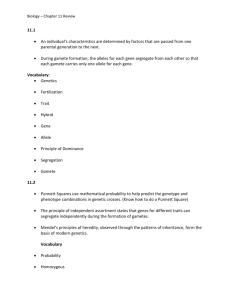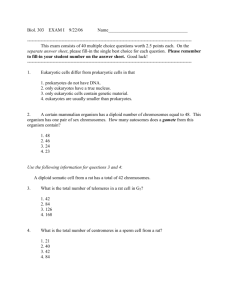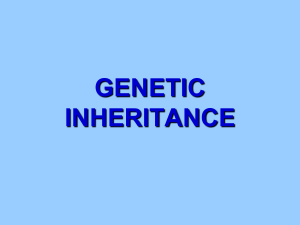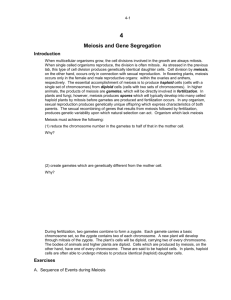Name Date ______ Pd - Social Circle City Schools
advertisement
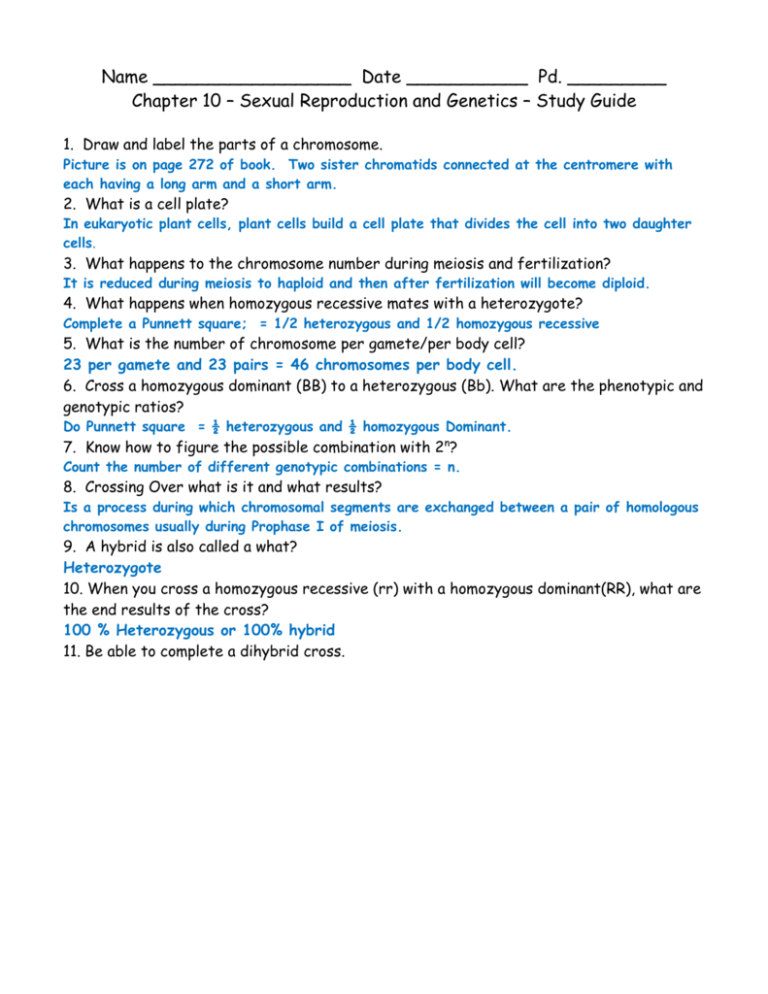
Name __________________ Date ___________ Pd. _________ Chapter 10 – Sexual Reproduction and Genetics – Study Guide 1. Draw and label the parts of a chromosome. Picture is on page 272 of book. Two sister chromatids connected at the centromere with each having a long arm and a short arm. 2. What is a cell plate? In eukaryotic plant cells, plant cells build a cell plate that divides the cell into two daughter cells. 3. What happens to the chromosome number during meiosis and fertilization? It is reduced during meiosis to haploid and then after fertilization will become diploid. 4. What happens when homozygous recessive mates with a heterozygote? Complete a Punnett square; = 1/2 heterozygous and 1/2 homozygous recessive 5. What is the number of chromosome per gamete/per body cell? 23 per gamete and 23 pairs = 46 chromosomes per body cell. 6. Cross a homozygous dominant (BB) to a heterozygous (Bb). What are the phenotypic and genotypic ratios? Do Punnett square = ½ heterozygous and ½ homozygous Dominant. 7. Know how to figure the possible combination with 2n? Count the number of different genotypic combinations = n. 8. Crossing Over what is it and what results? Is a process during which chromosomal segments are exchanged between a pair of homologous chromosomes usually during Prophase I of meiosis. 9. A hybrid is also called a what? Heterozygote 10. When you cross a homozygous recessive (rr) with a homozygous dominant(RR), what are the end results of the cross? 100 % Heterozygous or 100% hybrid 11. Be able to complete a dihybrid cross. 12. What are homologous pairs of chromosomes and in what phase do they line up along the equatorial plate? Paired chromosomes, one from each parent, that carries genes for a specific trait at the same location. 13. How can you prevent a plant from self pollinating? Remove the male parts, anther & filament = stamen of the bloom. 14. What is polyploidy and where does it occur? Polyploidy is having one or more extra sets of all chromosomes. Occurs in earthworms, lethal in humans and in plants makes them stronger. 15. What does the principle of dominance state? The dominant allele can mask the presence of the recessive allele. 16. If you flip a coin, what is the probably that it will come up heads? 1/2 or 0.5 17. What did Gregor Mendel use to study the inheritance of traits? Pea plants 18. What are linked genes? Where are they located? Linked genes are close to each other on the same chromosome and usually travel together during meiosis. This is the exception of Mendel’s Law of independent assortment because linked genes usually do not segregate independently. They are located close to each other on the same chromosome. 19. When do chromosomes form tetrads? Chromosomes form tetrads during Prophase I of meiosis. 20. What happens between Meiosis I and II that allows the reduction in the number of chromosomes? If the cell goes through interphase of the cell cycle it does not replicate its DNA. 21. What does meiosis result in forming? Gametes – sex cells 22. What is a haploid cell? A cell with half the number of chromosomes (n), as a diploid (2n) cell. 23. What is a gene map and what is it based on? Also, called chromosome maps, shows the sequence of genes on a chromosome and can be created by using crossover data. 24. What is Mendel’s Law of Independent Assortment? A random distribution of alleles occurs during gamete formation. 25. Will genes be linked if they are far apart on a chromosome? No they need to be close together.



